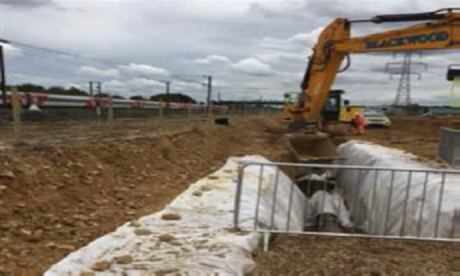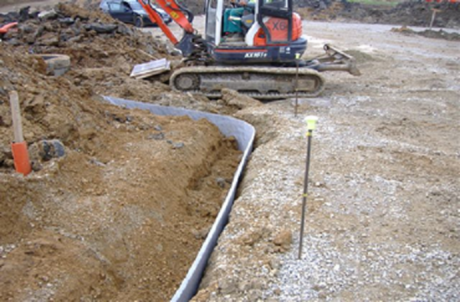DRAINAGE TRENCH: FILDRAIN is SAFER to INSTALL than TRADITIONAL CRUSHED STONE
An incident in October 2019 on a Network Rail site is a stark reminder of the dangers of working in trench excavations.
A trench for a drainage pipe at a depth of 2.5 to 3m was excavated using a trench box and the sides of the trench lined with geotextile prior to backfill with crushed stone. All of which is a laborious process.
A supervisor stepped into the trench to retrieve a survey rod and whilst in the trench, a section of the trench collapsed, trapping his legs and back, resulting in a fractured pelvis.
Stamford Underbridge Safety Bulletin, NRB 19 – 16
Trenches deeper than 1.5m must be shored for support, as in this instance, but the longer that the trench remains open, the greater is the risk of an incident, as in this case. Traditional construction with crushed stone is relatively slow and expensive.
A more modern form of drainage is to use Fildrain. Fildrain is a preformed (Off-site, factory manufactured) drainage layer comprising a high strength, lightweight HDPE core laminated with geotextile and this is utilised instead of crushed stone and geotextile. Fildrain is easily fed into the trench support box from the surface. The excavated soil is used as backfill. Not only is Fildrain safer, it has much lower embedded carbon.
ABG Fildrain 25SW – Used extensively in Highways, but not yet in Rail

Stamford Underbridge Safety Bulletin, NRB 19 – 16

ABG Fildrain 25SW – Used extensively in Highways, but not yet in Rail